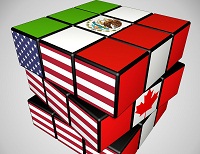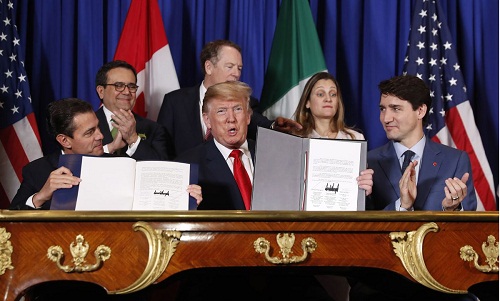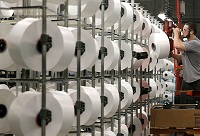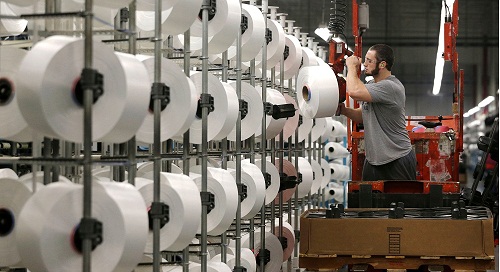FW
Massimo Piombini, who took over as the new CEO of Diesel SpA in late January, plans to expand in the sneakers market to turn around the denim brand that had its heyday in the 1990s. The pandemic is accelerating the brand’s expansion plans as its 436 stores across the world remain unaffected. Diesel also now plans to set up flagship stores in a number of hub cities, from New York and London to Berlin and Tel Aviv.
A part of the OTB group, founded by the Italian fashion entrepreneur Renzo Rosso, Diesel remains by far the biggest brand, generating about €900 million ($1 billion) of the group’s €1.5 billion revenue last year. In the 1990s, it became one of the best known Italian-designed global lifestyle brands and helped push denim into a premium category for the first time.
The brand sells 700,000 sneakers a year and hopes to potentially quadruple that number. The company will also revamp its merchandising and marketing strategies besides accelerating its digital transformation.
Though the stalled automotive sector has taken a toll on the global fiber market, declining apparel sales have made it more vulnerable to the ongoing global recession. Apparel sales in the US declined by almost 63 per cent year-on-year in May this year, following an 87 per cent decline in April. In the EU27, retail sales at specialist textile, apparel, footwear and leather goods stores declined by 55 per cent and 64 per cent in March and April, year-on-year. In Spain, these sales declined by 90 per cent in April, while in Sweden they declined by 38 per cent.
Plummeting sales hit retailers hard. In the US, five national companies with revenues in excess of $22billion in 2019 filed for Chapter 11 bankruptcy by the end of May. And global brands such as Gap and Inditex reported significant operating losses in Q1. From January to April, the value of apparel imports by the US declined by 19 per cent, year-on-year, and a massive 42 per cent in April alone. In Europe, apparel imports dropped by around 13 per cent in the first four months of the year, compared with the same period in 2019. In April alone, the decline was 38 per cent year-on-year.
The fourth quarter revenues of Capri Holdings, a US-based global fashion luxury group, declined 11.3 per cent to $1.19 billion in fourth quarter (Q4) FY20, ended on March 28, 2020 compared to revenue of $1.34 billion in same quarter last year. The company reported a net loss of $551 million during the quarter compared to net income of $19 million in Q4 FY19.
Its gross profit for the quarter was $631 million as against $793 million in the corresponding quarter of last fiscal. The company incurred a loss from the operations of $536 million compared to income of $40 million in same quarter last year.
The company’s revenue in the Versace segment's jumped by 55.5 per cent to $213 million. Sales of Versace in the Americas grew to $53 million while in EMEA (Europe, Middle East and Africa) they grew to to $109 million and Asia to $51 million.
However, revenues of Jimmy Choo fell by 23.0 per cent to $107 million and those of Michael Kors dropped by 18.4 per cent to $872 million. Sales of Jimmy Choo during Q4 FY20 in Americas was $22 million, EMEA $54 million, and Asia $31 million. The revenues of Michael Kors decreased in all the regions with Americas declining by $600 million, EMEA by $169 million and Asia by $103 million.
India’s Council for Leather Exports (CLE) plans to sign an agreement with Washington-based Footwear Distributors and Retailers of America and the United States Fashion Industry Association to tap emerging opportunities for Indian exporters there.
From September 2020 onwards, CLE expects exports to normalize. The council plans to tap the growing opportunities in India which has become a preferred sourcing destination for major markets in the United States and Europe.
CLE’s major markets of Europe and USA were severely affected by COVID-19. Many of its buyers are filing bankruptcy which is leading to cancellation of export orders. Exporters are facing difficulties as ECGC coverage (insurance) is not extended for pre-shipments.
Recently, CLE participated in the virtual B2B meetings with Korean and Vietnamese entrepreneurs and buyers. The council is also in touch with the EU, the UK and Russian markets. It plans to hold virtual exhibitions with Russian buyers on July 20 and 21 and with Peru on August 5 and 6.
A study funded by Australian Wool Innovation (AWI) finds the growing market demand for wool base-layer garments can be attributed to the already well-researched benefits of superfine Merino wool, including its softness next to the skin, moisture management, breathability – and fire resistance. Increased demand is driven by the incidence of injuries to military personnel in the Middle East, where battle techniques such as improvised explosive devices (IEDs) were used. Considerably more severe skin injuries occurred when synthetic base-layers were worn, as they can melt onto the skin at high temperatures.
The study found that the wool and wool rich fabrics, used as base-layer garments for military and first responders like firefighters, are the best in fire resistance, while the 100 per cent synthetic fabrics (polypropylene and polyester fabrics) scored the worst due to their propensity to melt and damage the skin.
AWI studied the fire resistance of various fabrics used as base-layer garments for military and first responder personnel such as firefighters. The study concluded that the wool and wool rich fabrics in the study performed the best, while the 100 per cent synthetic fabrics performed the worst due to their propensity to melt and damage the skin.
 For domestic textile manufacturers and importers in the US, the United States-Mexico-Canada Agreement (USMCA) is a like the medicine that though doesn’t cure but does not hurt either. These manufacturers view the agreement as an extension of the North American Free Trade Agreement (NAFTA) that ruled trade between the three countries for a quarter century. Though experts viewed NAFTA as a threat to local jobs, US textile companies viewed it as a getaway to an export market in the south.
For domestic textile manufacturers and importers in the US, the United States-Mexico-Canada Agreement (USMCA) is a like the medicine that though doesn’t cure but does not hurt either. These manufacturers view the agreement as an extension of the North American Free Trade Agreement (NAFTA) that ruled trade between the three countries for a quarter century. Though experts viewed NAFTA as a threat to local jobs, US textile companies viewed it as a getaway to an export market in the south.
Victory for domestic manufacturers
On the other hand, the newly christened trade pact is being seen as a victory for domestic soft-goods and shoe stakeholders. According to Steve Lamar, CEO & President, AAFA the deal provides domestic textile, apparel and footwear industries an assurance of support to supply chain operations that employ hundreds of thousands of Americans.
The deal encourages American businesses to continue to work with supply chains in the North American region, says Lamar. It does not impose unnecessary trade barriers, such as punitive tariffs which are important for businesses as they recover from the effects of COVID-19 on their businesses, he adds.
unnecessary trade barriers, such as punitive tariffs which are important for businesses as they recover from the effects of COVID-19 on their businesses, he adds.
US Trade Representative Robert Lighthizer worked closely with the US Congress to get the deal approved. According to the USTR, the deal contains significant improvements and modernized approaches that will deliver more jobs, ensure labor protection, expand market access and offer greater trade opportunities for large and small companies.
Concerns about USMCA the deal
However, supply-chain risk intelligence analyst Tim Yu of Resilience360 raises concerns about the new rules and changes that USMCA introduces. According to him, the deal could affect North American supply chains, including major amendments to rules of origin, higher de minimize thresholds, labor rights obligations, customs facilitation, intellectual property, environmental protections, and digital trade and e-commerce. The rule will compel the defendant to prove that an alleged labor rights violation will not affect trade or investment between parties, he says.
According to Yu, the deal will benefit digital trade and e-commerce firms, retail manufacturers and agriculture producers by offering them greater market access and trade liberalization measures. However, it would also affect North American production by incentivizing foreign companies to move production elsewhere to avoid additional trade restrictions.
Kim Glas, CEO, National Council of Textile Organizations (NCTO) stresses that the deal will greatly benefit the US textile industry at a time when domestic producers, have converted their production lines to manufacturing personal protective equipment (PPE) for frontline workers during this crisis. According to him, it is absolutely critical to sustain the $20 billion in apparel and textile trilateral trade between the US Mexico and Canada and USMCA can go a long way to ensure this.
 The Coronavirus outbreak across the US has exposed the country’s ineptness in manufacturing critical textile-related personal protective equipment (PPE) on an emergency scale. With great difficulty, factories across the country were able to manufacture the required products like face masks and gowns for frontline workers and the public.
The Coronavirus outbreak across the US has exposed the country’s ineptness in manufacturing critical textile-related personal protective equipment (PPE) on an emergency scale. With great difficulty, factories across the country were able to manufacture the required products like face masks and gowns for frontline workers and the public.
One reason for this is the slow pace of textile and apparel industry revival since the Great Recession. It made retailers and brands realize the importance of sourcing at least a portion of their merchandize closer home. Coronavirus might accelerate this trend further, fuelling the growth of domestic textile industry.
Strengthening supply chains
The pandemic offers domestic textile players an opportunity to regain their position as producers. And as Kim Glas, CEO, National Council of Textile Organizations (NCTO) points out, lawmakers and key decision makers need to introduce new policies and fund to strengthen existing textile supply chains besides attracting new ones.
Organizations (NCTO) points out, lawmakers and key decision makers need to introduce new policies and fund to strengthen existing textile supply chains besides attracting new ones.
Glas advises textile leaders to build on the woven fabric and yarns industry in the country. As the US does not have a lot of cut-and-sew operations, it is currently automating some of its finished products to better compete with imports in speed and in lowering labor costs. Manufacturers in the country have also opened new facilities to convert textile and other waste to new textile uses and resins
Policies for domestic producers
The government should draft new policies to support the growth of these industries, Glas feels. It should prioritize domestic production chains and make adequate investments into it. The industry should also appeal to its customers to buy products made in the US only, especially products like masks and other supplies, views Sherry Wood, Director-Merchandising, Texollini.
Experts opine though some production is coming back online and orders are picking up, customers are reluctant to spend due to the looming financial uncertainty. Hence, there is a need for brands and retailer to strengthen domestic industry and production chains that exist with its free trade agreement countries in the Western Hemisphere.
Foundation for ‘Made in America’ supplies
Ed Gribbin, President, Americas Apparel Production Network (AAPN), views the pandemic as an opportunity for the textile and apparel industry to build a foundation for a ‘Made in America’ supply chain for critical medical supplies. Wood also believes it offers ‘Made in America’ to be a key sourcing destination. Consumers, including those in the fashion industry were moving away from products made in China even before the pandemic. The pandemic has accelerated their move.
Preeti Arya, Assistant Professor, Fashion Institute of Technology, advises the industry to revise supply chains for sampling, R&D and small manufacturing, especially of nonwovens and more sustainable yarns and fabrics.
Challenges in the way
Julia Hughes, President, United States Fashion Industry Association argues even though the move to bring apparel production back to the US is welcome, it is not feasible as it is difficult to find companies that make on a cost competitive scale in the country. Hughes acknowledges production of yarn and fabrics in the country is very competitive as the industry has begun to embrace automation and robotics into production.
Once, the pandemic is over, the apparel industry might again revert to producing cheap products as many retailers have gone bankrupt due to COVID-19 losses. This could arrest the revival of ‘Made in America’ apparels in a big way, opines Hughes.
The Council of Fashion Designers of America hasl cut back the number of days designated for its spring shows in September to three.
In a notice sent to members and obtained by WWD, the spring shows will now run Sept. 14 to 16. If there is enough demand. Sept. 17 will be added as a supplemental day.
The group stressed that the shortened calendar will be for the September shows only and no decision has been made for pre-fall 2021 or beyond.
The group is working on an updated version of the official NYFW application for returning or new brands that will be shared in the coming weeks. It is also planning to provide all participating brands with digital resources to showcase their collections that will allow them to share their latest work, maximize exposure and operate directly with the industry.
The Export Promotion Bureau (EPB) of Bangladesh has increased its export target for FY 2020-21 by 13 per cent. The bureau has set a $37.44-billion export target for the year for expects exports to reach $33 billion by the end of current fiscal year, 2019-20. The initial target for the outgoing fiscal was $45.50 billion.
As per the target, the ready-made garment (RMG) sector will contribute more than 82 percent. Additionally service export will contribute $7.6 billion. The apparel industry has witnessed 82 percent and 62 percent negative growth in April and May respectively this year compared to last year’s April and May. Total export earnings during July-May fell b by 17.99 percent to $30.99 billion, from $33 billion in the same period of last fiscal year.
Bangladesh fetched $34.13 billion from RMG export in FY ’19 marking 11.49-per cent growth over that in FY ’18. The compound annual growth rate of apparel export in the past five years has been 6.86 percent.
The export sectors need government policy support to overcome the pandemic’s impact and sustain, she opined. According to the business leader, such a decline has not yet been detected in the history of the industry. Exports fell $6.6 billion in the current fiscal year, close to a fifth of last year. The RMG sector experienced a 4.6 billion export decline in the just three months from April to June 2020, exacerbating the impact of COVID-19 on the industry.
Google and WWF Sweden are partnering to create a data-driven platform to enable the fashion industry to make more environmentally-responsible sourcing decisions and move towards more sustainable manufacturing processes.
Research by environmental consultancy Quantis found that the footwear and apparel industries combined were responsible for 8.1 per cent of global emissions. Most of these impacts occur at the raw materials stage in the production process.
Google and WWF will create an updated platform that leverages all these data types, with the aim of further increasing accuracy and relevance of raw material assessments. It will include numerous raw materials based on WWF data and knowledge. This knowledge will be combined using Google Cloud’s technical capacity – including big-data analysis and machine learning.
The platform aims to address these challenges by offering an open-source resource that can be used on a standalone basis, or to complement existing efforts.












